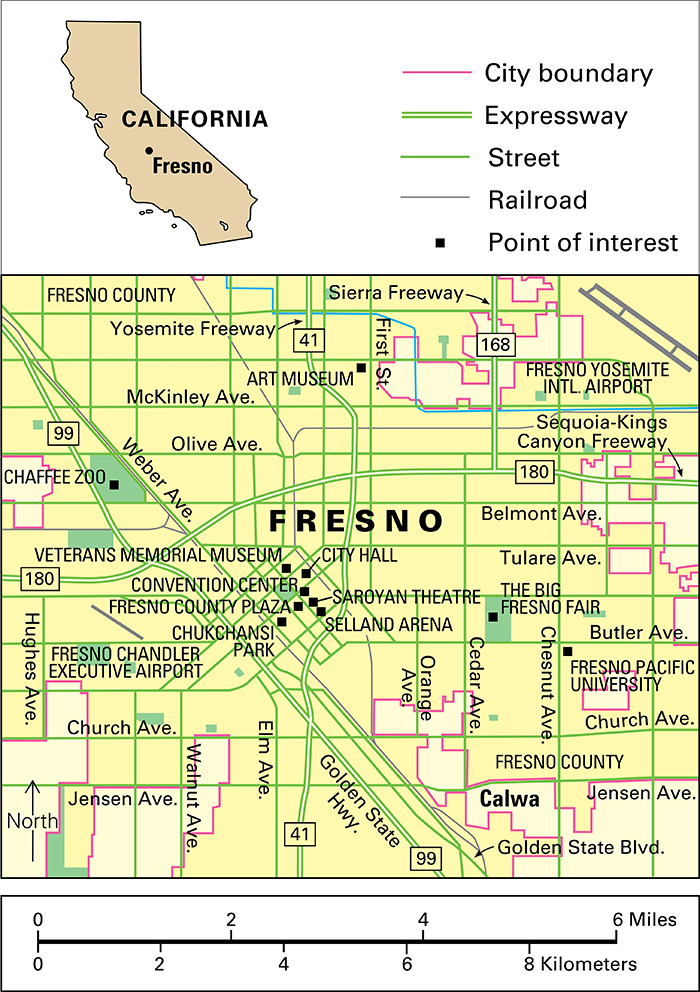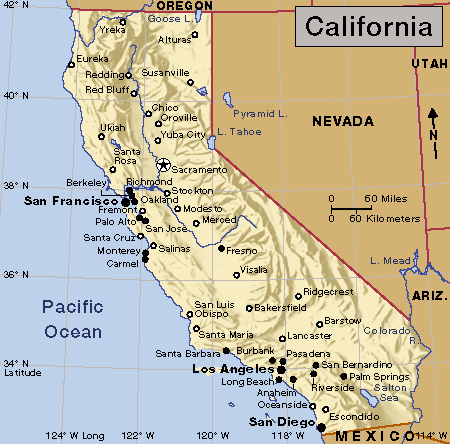Fresno << FREHZ noh >> (pop. 542,107; met. area pop. 1,164,909) is the main marketing, distribution, and financial center of central California. It lies in Fresno County, in the middle of the fertile San Joaquin Valley.


Irrigation from the nearby Kings and San Joaquin rivers helps Fresno County lead the nation’s counties in agricultural products sold. Farmers there grow over 350 crops. Grapes and almonds rank as the chief crops. The largest fig orchards in the United States flourish near Fresno. Almost all of the nation’s raisins are produced in the Fresno area.
The packing, processing, and shipping of agricultural products is Fresno’s chief industry. Other leading economic activities in the Fresno area include construction, retail trade, and the manufacturing of ceramics, chemicals, and farm machinery. Government employment is also an important part of the economy. Spending by tourists and conventioneers also contributes.

Downtown Fresno includes a civic center, a convention center, and the William Saroyan Theatre. The city is the home of the Fresno Art Museum and the Fresno Philharmonic. Local universities and colleges include California State University, Fresno; Fresno Pacific University; and Fresno Pacific Biblical Seminary.
Indigenous (native) Yokuts people had lived in what is now the Fresno area for at least 8,000 years when Mexican ranchers acquired land there in the 1840’s. The United States captured the California territory from Mexico during the Mexican War (1846-1848).
The gold rush of 1849 attracted thousands of people to California. By 1860, investors were buying land in the Fresno area. Leland Stanford, Collis P. Huntington, Mark Hopkins, and Charles Crocker, the owners of the Central Pacific Railroad, were known as the “Big Four.” They realized the area had farm potential. Under their direction, the Central Pacific built a rail line into the San Joaquin Valley. In 1872, the railroad company built the town of Fresno Station (now Fresno). Several irrigation canals were constructed during the 1870’s and 1880’s, and the town became a booming farm community. Fresno was incorporated as a city in 1885. Since the mid-1900’s, the development of agricultural industries has helped create a population boom in Fresno. The city’s population jumped from 60,685 in 1940 to 542,107 in 2020. Fresno is the county seat of Fresno County and has a mayor-council government.
